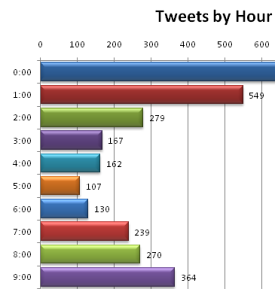LiveJournal May Be Unsuitable for Minors
While reading roleplaying game designer Chris Pramas' blog this morning, I discovered that LiveJournal can display an "adult content notice" when one of its bloggers is talkin' dirty:

In this case, Pramas was discussing a fight that took place at his bus stop between a drunk and a middle-aged Native American with a walker. This paragraph contains a gerund that could potentially be unsuitable to minors:
As we were finding seats, somehow the tide turned. Walker guy had gotten his arms around the drunk and body slammed him head first into the wall. The whole bus went, "Whoah!" Drunky ended up on all fours, with the other guy on top of him. The last thing we saw was the now walkerless guy reaching up between the drunk's legs and cockpunching him. Can't say he didn't deserve it. Then the bus roared away.
Pramas would be in a better position to judge, but it appears to me that the drunk's armor class was adversely affected by his inebriation. I'm not surprised that the Native American, even with his reduced Dexterity, could succeed with a grappling attack.
Content notices were added last November and can be triggered by the blogger on a voluntary basis or by LiveJournal admins. There are two levels of warning -- the one on Pramas' blog and another for pages that may contain material only suitable for adults and are restricted to people 18 and up.
So if I understand LiveJournal's content filtering system, cockpunching is OK for 14-year-olds.
Importing a Multiple-Author Blog to TypePad
I'm paying Six Apart $300 a year for a premium subscription to TypePad, which gives me an unlimited number of multiple-author weblogs that can be hosted on my own domains. I recently decided to move Watching the Watchers to TypePad, because I'd like the site's writers to have a more friendly user interface, but I've run into a dealbreaker -- the software doesn't import the authors of blog entries. All 1,400 articles on the site are stored in my name.
TypePad supports multiple authors and Six Apart's weblog import format, which has an Author field, but the software ignores this information when you import:
TypePad is unable to import posts from different authors. If a post was created by a different author, it will be associated with the weblog's owner instead. This would require that TypePad create the authors during the import process and this feature is currently unavailable.
I can probably work around this by making each author a category, but that's a clumsy kludge, so I'm going to bang on Six Apart first and see if they might change this policy. I've opened up a support ticket and contacted some of my homies at the company.
Et Tu, Scott McClellan?
 I'm currently reading What Happened, former White House press secretary Scott McClellan's 323-page stab in the back to the Bush administration. The book wasn't supposed to be out until June 1, but the publisher lifted the embargo yesterday and I grabbed a copy at Barnes & Noble.
I'm currently reading What Happened, former White House press secretary Scott McClellan's 323-page stab in the back to the Bush administration. The book wasn't supposed to be out until June 1, but the publisher lifted the embargo yesterday and I grabbed a copy at Barnes & Noble.
Current and former Bush administration officials are playing dumb on McClellan's motive for writing the book, but he makes it crystal clear in the preface: Valerie Plame leakers in the White House used him to pass along lies to hide the truth and save their own asses, and Scotty don't play that way.
I had unknowingly passed along false information. And five of the highest-ranking officials in the administration were involved in my doing so: Rove, Libby, Vice President Cheney, the president's chief of staff Andrew Card, and the president himself.
For my next two years as press secretary, the false words I uttered at that Friday's briefing would stand as the official White House position on the Plame case.
I'll say more on the book later, since I'm just 66 pages in, but the chapter where McClellan tells his life story makes him sound hopelessly out of his depth as a senior White House official. In a place you'd normally expect a 40-year-old man to describe the intellectual and professional accomplishments that had brought him to such an esteemed position in government, McClellan focuses almost entirely on his childhood.
He mentions that he graduated in the "with honors in the top 20 percent" of his high school class, waged an unsuccessful battle to stop his University of Texas fraternity from paddling, guided his high-school tennis team to second place in state, visited Six Flags over Georgia, and dated a Hispanic in elementary school. He even names her.
Before she lost interest in me, my smart, pretty sixth grade girlfriend was Camille Mojica, a Hispanic girl. Such a relationship was considered unusual in those days.
Mojica appears to have grown up to be a science reporter. Apparently they had a lot of chemistry.
Indian Teen's New Blog Crunches Numbers
Yuvi Pandian's a 17-year-old in Chennai, India, whose interests in statistics and tech have combined, in true "you got your chocolate in my peanut butter" fashion, to form Stat Bot, a blog that crunches numbers to produce graphs, pies, and other visualizations of our sad corner of the web. I discovered Pandian today when he turned up in my Meme13 feed.
 In the four weeks since he began the site, Pandian has shown us how Digg headlines have changed over time, which Twitter clients are favored by Twitter obsessives, and how often TechCrunch pimps TechCrunch.
In the four weeks since he began the site, Pandian has shown us how Digg headlines have changed over time, which Twitter clients are favored by Twitter obsessives, and how often TechCrunch pimps TechCrunch.
His most promising field of study has been the gluttonous online activity of Robert Scoble. Thanks to Pandian, we now know when Scoble sleeps, based on an analysis of the 10,598 Twitter messages he posted over a 523-day period:
Scoble never lets you down, especially when it comes to providing data: He's on twitter, friendfeed, flickr, qik, a blog and god-knows-how-many-other-services. I will be analysing the rest of his "Online Life", with posts about them on regular intervals, starting now with his Twitter Stream. ...
As you can see, tweeting gets going at around 7 PM and goes on till 12 AM, and slowly dies down at 1 AM. Usually sleeps from 2 AM to 7 AM, and Twittering picks up again after 9AM.
Though I'm frightened at the prospect of learning more about Scoble, it's cool that a teen in India can worm his way into the tech blogosphere through sheer love of numbers. Sometimes the world is pleasantly small.
'Recount' Stars Voting Machine That Doomed Gore
Over the holiday weekend, my wife M.C. Moewe wrote a news story for the Daytona Beach News-Journal on the Volusia County optical scan voting machine that registered 16,000 negative votes for Al Gore right as the networks were scrambling to decide who won Florida:
HBO's new docudrama Recount stars Kevin Spacey and Denis Leary, but the real scene-stealer hails from Volusia County -- a voting machine that registered 16,000 negative votes for Al Gore in the wee hours of election night 2000.
"A machine in Volusia went crazy," says Leary in the film, portraying a Gore campaign strategist. "It actually added 3,000 votes to Bush's total and subtracted thousands of votes from Gore. I mean Gore's count right now is negative 16,000 in that county."
What caused the voting machine memory card glitch is not a topic in the account that premieres tonight at 9 o'clock. In fact, it still remains unknown and begs the question: Could it happen again? ...
At the time, employees with the machine's maker said in internal e-mails that an unknown "second" memory card caused the problem. After inquiries from The News-Journal, officials with Diebold Inc.'s Premier Election Solutions recently said there is a problem with a part on the machines in question -- 25,000 are used across the U.S -- which could cause memory card failures.
In Volusia County, the same "crazy" optical scan machines that delivered Gore's negative vote total are still in use.
The negative votes in 2000 could have been caused by four problems according to internal e-mails written by the machine's manufacturer, then called Global Election Systems. A corrupt memory card, an invalid read from a good card, corruption of memory or a card from an "un-authorized source."
As a programmer, I've never understood how Diebold's voting software accepted negative votes and lowered a candidate's total. You'd think the logical impossibility would've caused the input to be rejected before it altered the course of American history.
Following Web Page Redirects with Java
CNET moved a bunch of its blogs to a different domain this weekend, including Beyond Binary, Coop's Corner, Geek Gestalt, One More Thing, Outside the Lines and The Social. I mention this because the change hosed Meme13, which treated all six as if they were newly discovered sites.
One of my ground rules for developing Meme13 is that I won't hand-edit the site to make it smarter. I need the application to recognize when existing sites in its database have moved.
Meme13 monitors sites using a Java application I wrote that downloads web pages with the Apache HTTPClient 3.0 class library. Web servers indicate that a page has moved by sending an HTTP redirect response of either "301 Moved Permanently," which indicates a permanent move, or "302 Found," which is intended for temporary changes. I wrote a Java method that can find the current location of a web page, even if it has been redirected one or more times:
public String checkFeedUrl(String feedUrl) {
String response = feedUrl;
HttpClient client = new HttpClient();
HttpMethod method = new HeadMethod(feedUrl);
method.setFollowRedirects(false);
try {
// request feed
int statusCode = client.executeMethod(method);
if ((statusCode == 301) | (statusCode == 302)) {
// feed has moved
Header location = method.getResponseHeader("Location");
if (!location.getValue().equals("")) {
// recursively check URL until it's not redirected any more
response = checkFeedUrl(location.getValue());
}
} else {
response = feedUrl;
}
} catch (IOException ioe) {
response = feedUrl;
}
return response;
}
The HeadMethod class requests a web page's headers instead of requesting the entire page, consuming far less bandwidth as it checks for redirects. My Java method looks for both kinds of redirects, because web publishers have a bad habit of using "302 Found" when they've moved a page permanently.
Any Reason Why These Two Should Not Be Wed?
Today's New York Times has an amazing sequence of photos taken by a wedding photographer in Bailu, China, during the May 12 earthquake. Five impeccably dressed Chinese couples were getting their photos taken at an abandoned French missionary church as the disaster struck.
There are more photos on a Chinese-language media site. Photographer Wang Qiang's caption for one photo, which he posted on his blog: "What is happiness, happiness is safe and sound. Having gone through a life-and-death test, they surely will clasp hands and grow old together."


